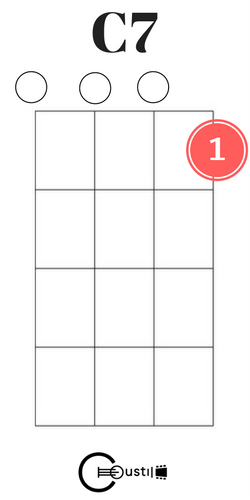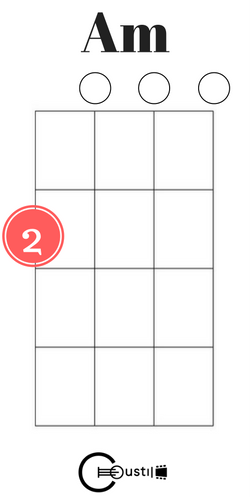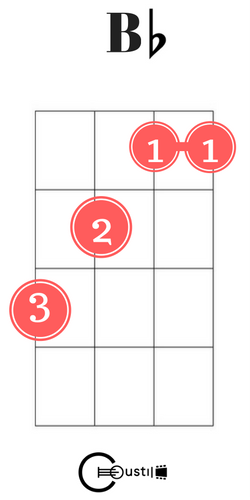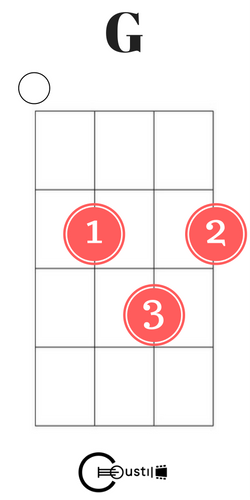Are you wanting to learn to play the ukulele, but don’t know where to begin? Well, you’ve come to the right place. We’ve broken down how to play ukulele chords into an easy digestible format. Learn a section at a time, or sit down and pull up a chair to memorize the whole enchilada.
Where do I begin?
Before we jump into the chords you should make sure you’re learning on a quality instrument. We’ve got an easy to use guide, to help you find the perfect uke for you in this article. Here are a few products we recommend you add to your gig bag before you rock out on these chords.
[tcb-script id=”mNCC” language=”javascript”]medianet_width = “600”;medianet_height = “250”;medianet_crid = “712534424”;medianet_versionId = “3111299”;[/tcb-script][tcb-script src=”//contextual.media.net/nmedianet.js?cid=8CU7GM763″][/tcb-script]
If you begin on a cheap uke, you won’t sound as good, which can be disheartening. We understand that if you are a beginner ukulele player, it may seem like a better decision for your wallet to not invest in high-quality ukulele. In the end, however, saving a few dollars on a beginner uke may make you more frustrated due to the lack of quality! You may find that you cannot quite hit the correct notes or that it is “always” going out of tune! The last thing you want is to strum a few chords and have to re-tune again. Waste of time! Loss of patience!
Image courtesy of Amazon
Next, make sure your ukulele is tuned properly. The Intellitouch PT10c Mini Clip on Tuner, makes it easy to tune your uke wherever you are. It’s small, easy to fit in your bag and the screen’s color system makes it easy to tune your instrument. The notes and chords will sound horrible if your uke isn’t tuned correctly. You can follow this guide to tuning your ukulele. A quick and simple trick is to get an electronic tuner and check before you start playing.
Let’s get started! We start with our fingers. On the diagram below, you’ll see that we have each finger numbered. Use the diagram to easily identify which fingers need to go where on your ukulele strings. We won’t be using the thumb, so just remember the digits from 1 to 4.
Where do I put my fingers?
Uke chord charts have four vertical lines that represent the four strings of your ukulele. If you’re familiar with playing guitar, you may notice that reading a uke tab is very similar to reading a guitar tab! The first vertical line on the chart displayed above can be your thickest string, which is usually your G string.


The first string, however, is not always a G string, and it’s also not always your thickest string. A ukulele can be tuned in many different ways such as the re-entrant method. Depending on the tuning that you use, the order of the strings may be different. Because many ukuleles use the re-entrant method, the thickest string is commonly the C string, not the G.
Musician’s Tip: If you are right handed and fingering with your left hand, and playing with G-C-E-A tuning as pictured above, the G-string will be closest to your nose. When you don’t hold down on any frets, this plays an G note or an open fret.
Be aware that the chart goes in sequential order starting with G and moving from the C (third string), to the E (second string), and last but not least to the thinnest string: the A (first string).
Re-entrant Tuning Method: Explained!
Although standard ukulele tuning is very popular, so is the re-entrant method. Standard ukulele tuning is very common for soprano, concert, and tenor ukes. In fact, only tenor and baritone ukuleles are not commonly tuned using the re-entrant method.
So, what is the re-entrant tuning method? If you are using re-entrant tuning that means that your strings will not run from low to high. Soprano ukuleles are tuned using the re-entrant method for example. Soprano ukuleles are a popular choice for beginner to amateur ukulele players because it is easy to get used to the size of the soprano ukulele. It is also important for beginners to start to understand chord structure on a soprano ukulele. If you start on a soprano ukulele, you may find that it is not as hard for you to reach new chords.
What do all these symbols mean?
Luckily, these uke chords only have two important symbols. The easiest and most used symbol is the black circle, which means to fret a note. Here, we’ll also put the number of the finger which you use.

An open string will be a white circle on a uke chart. The open strings are the notes at the top of the chart, G,C,E,A. A funny way to remember the order is by saying: Get Crazy Every Afternoon. If that’s not a life motto, I don’t know what is! Having these memorized will help you remember your finger placement.
Understanding Symbols for Ukulele Chords!
You may also need to understand one quick note about ukulele chords! If you are a complete novice it is important to understand that a capital M, means a MAJOR chord, and a lowercase m, means a MINOR chord.
For example, CM means C major. Cm means C minor! We hope that clarifies any confusion before you get started reading about how to play uke chords!
Learning to Play the Easiest Ukulele Chords!
Many people learn ukulele chords in musical groupings that will help them play songs. Although it is your decision in what order to learn the chords, learning them in alphabetical order can be a good way to start. A lot of uke books will teach you chords in the key of C first, and afterward, the books will teach you other keys.
We would like to introduce the first set of uke chords to you in a way that will help you to learn the easiest chords first. Then we will introduce some harder chords a little later. The first chords we are going to explain are C major, C minor, C7, A major, A minor, and A7. Prepare to bask in the glory of the easy C chord, but unfortunately not all the chords are this simple!
To play the C major chord (CM), simply place your ring finger on the A string on the third fret. To play the C minor chord (Cm), stay on the same fret and either use three fingers, or use a barre chord again on the C, E and A strings (the second, third, and fourth strings). This C minor chord is played on the 3rd fret, although there are other versions of the C minor chord that you can learn later! For now, we recommend that if you’re a complete beginner, you try just using three fingers for now and leaving the barre chord for later! Let’s give C7 a try! C7 is another piece of cake! Place your first finger on the first fret of the A string. That’s all!
To master the A major chord, place your index finger (first finger) on the first fret on the C string and your middle finger on the second fret of the G string. Voila! You’ve learned the A chord. A minor looks very similar to the A chord. If your hand is already in the position of an A major chord, you only need to remove your index finger from the first fret. Now you should only have your second finger on the G string on the second fret. That’s A minor!
A7 is also extra easy for you to learn! Just place your first finger on the first fret of the C string. The good news is that you may be able to learn A and C chords pretty quickly, especially if you are already familiar with playing other stringed instruments.
[tcb-script async=”” src=”//pagead2.googlesyndication.com/pagead/js/adsbygoogle.js”][/tcb-script][tcb-script][/tcb-script]





Let’s Learn the Ds, Fs, and Gs!
The next set of easiest chords is D, F, and G! We’ll get to B’s and E’s yet, but now let’s learn F major and F minor.
To hit the F chord, you have to reach over the other strings to fret. Keep the C and A strings open with your first finger on the E string on the first fret and your second finger on the G string on the second fret.
You’ll have to do a bit of a stretch to play the F minor (Fm) chord. Your first two fingers stretch between the G and E strings on the first fret, then your ring finger hits the A string on the third fret.
The D chord will use your three fingers sequentially on the second fret of the G, C, and E strings. The Dm chord is very similar to playing the F chord. You just need to add your ring finger (third finger) to the C string on the second fret.
The G chord will use all three fingers placed very close together. It may feel like your hand is going to cramp up, but with practice, your muscles will get used to it. Your first finger will hit the C string on the second fret, your second finger will also be on the second fret, but on the A string. The ring finger is placed on the E string on the third fret.





What About B? How Can I Play the B Chord?
You’ll find that B major is a little tricky to play, but luckily you won’t have to play it too often. It’s important to know how to play B though and have it saved in your back pocket should the opportunity arise.
You’ll notice that playing the B chord requires you to use a barre chord! Thankfully, you will not need the B chord in many songs, but it is good to learn anyway. When you play a barre chord you’ll use the same finger to fret multiple strings. In other words, when you play a barre chord you have to press down several strings at the same time. Barre chords are usually achieved by laying your index finger flat against the strings. But, unlike the B chord, there are some tricky ones that require other fingers to fret the strings.
To play the B chord, fret the E and A strings on the second fret with your first finger. Place your second finger on the third fret on the C string and also your third finger on the fourth fret on the G string. If the B chord is a little hard for you, try some other chords first and come back to the B chord another day.

Perhaps more important than the B chord is the Bb (B flat) since it appears frequently in folk songs. First, check out the image of the chord below so you have an idea of what it looks like.
To play a Bb you will need to be able to play a partial barre chord. To support your hand, place your thumb on the back of the neck of your uke, and then press down on the last two strings using your index finger on the first fret. Your wrist should be lowered in order for you to reach two of your remaining fingers (your second and third finger) across the fretboard. You will press down on the third fret on the first or ‘G’ string with your third finger. You will also press down on the second fret on the second or ‘C’ string with your second finger.
It’s a little tricky to master this chord, but you’ll need it for many songs, and it is often used for songs on the ukulele in the key of F. If the Bb chord is still troubling you, try learning the Gm7 chord first, which is very similar to a Bb chord. A Gm7 is the same as the Bb flat, expect that you remove your third finger from the first string on the third fret. In a pinch, you can use the Gm7 instead of the Bb until you learn the Bb better!

 [tcb-script async=”” src=”//pagead2.googlesyndication.com/pagead/js/adsbygoogle.js”][/tcb-script][tcb-script][/tcb-script]
[tcb-script async=”” src=”//pagead2.googlesyndication.com/pagead/js/adsbygoogle.js”][/tcb-script][tcb-script][/tcb-script]
Mastering the Tricky, but SUPER Important E Chord!
One thing that can help you hit the E chord is by working on your reach and flexibility in your fingers. You can achieve this by including finger exercises in your daily warm up. This will not only increase your finger reach, but allow you to play longer and faster!
When playing the E chord, start with your first finger on the G string on the first fret. Then place your second finger on the A string on the second fret. Your third finger will cross over the strings to hit the C string on the fourth fret. This is not only one way to play the E chord, but it is also the easiest.

The standard, commonly used E chord can look a little different. You may often see the E chord pictured as a barre chord. For example, you may see the following image of an E chord in a song book:

This version of the E barre chord will require you to barre the G, C, and E strings on the fourth fret with one finger and place your first finger on the A chord on the second fret. Alternatively, you can also decide to use all three of your others fingers to hold down each string, rather than playing a barre chord. Although this strategy may work initially, eventually it will be important to learn to play this chord as a barre chord!
There are still other ways to play the E chord, but it is crucial that you learn at least one way to play an E chord if you want to play the ukulele! There’s simply no way to get around it!
How Do I Play Other Minor Chords?
You already know how to play a few easy minor ukulele chords, but there are a few more important minor chords for you to learn! In general, minor chords create softer sounds, whereas major chords sound strong and happy. Don’t dismiss the minor chords though. They can add a moody sound to your tunes. Let’s look at Bm, Em, Gm,
Bm is a toughy! You’ll need to use the barre chord we learned in the B chord a few minutes ago. You will barre the C, E, and A strings on the second fret with your first finger. You also need to place your third finger on the 4th fret on the G string! Although this chord is not the first chord you’ll probably learn, you may need it later on!
Up next we’ve got Em and Gm. If you’ve already conquered Bm you have nothing to fear from these minor chords! To get the Em chord down, you’ll need to use your first three fingers and reach over the strings to fret. Start with your first finger on the A string on the second fret. Your second finger will be E string on the third fret. Lastly, your third finger will be on the C string on the fourth fret.
The Gm chord is played with your first finger on the A string, first fret. Your second finger will be on the C string on the second fret, and the third finger on the E string on the third fret.


 [tcb-script async=”” src=”//pagead2.googlesyndication.com/pagead/js/adsbygoogle.js”][/tcb-script][tcb-script][/tcb-script]
[tcb-script async=”” src=”//pagead2.googlesyndication.com/pagead/js/adsbygoogle.js”][/tcb-script][tcb-script][/tcb-script]
How do I play the 7th chords?
The 7th chords add a groovy vibe to your music. They are very common in blues and jazz songs and are indicated by the number 7 after the letter name. You can add a little soul to your tunes with these 7th chords! The 7th chords are relatively easy to learn. You’ve already had a brief intro to 7 chords when you learned A7 and C7 in the beginning of the article!
The B7 chord is a little more complicated than A7 or C7. Use a barre chord on the G, E, and A strings on the second fret. Then add your middle finger on the C string, third fret.
D7 is somewhat similar to B7. You’ll use another barre chord on the G, C, and E strings on the second fret with the first finger. Then add your middle finger down on the A string on the third fret and you’ve got it!


We are onto the last three ukulele chords for beginners that we will cover. F7 is going to be one of the most difficult chords, but you’ve come this far, so we know that you can do it! Add a little extra practice to these three and you’ll be rocking it! F7 is just like the F chord we learned earlier, but you’ll add your third finger on the C string on the third fret.
Hit the E7 chord with your first finger on the G string on the first fret. Your second and third fingers will both be on the second fret, but on the C and A strings, respectively.
Last but not least, G7! Place your first finger on the E string on the first fret. Your second finger will reach over the E and A strings to the C string. Place your second finger on the second fret. Also, your third finger will be on the second fret as well but on the A string.



Ukulele Chord Progressions
Of course, if you’re a musician already, you may know that some chords just sound better together than others! For example, Am, C, Dm, and A7, which are all chords you’ve learned in this brief how-to article can be played together. Try also A, D, and E7 together. If you know what chords go together you can start to create your own songs, and not just play the songs of others. A sign of a true musician is one who can compose and create their own music!
Another set of chords that will blend well together is Em, G, C, and D. These chords are excellent together on both the ukulele and the guitar! Or try B7, Em, Cm, and G together! As you play more on the uke, you’ll learn to develop your own style!!!
Chord Transitions
If you’re a beginner to the uke, don’t forget to take your time. Don’t stress yourself out on becoming a world-renown ukulele musician overnight. You also need patience to build muscle memory.
To help you to get started try learning chords transitions between G and C. When you are playing a G chord, press your fingers firmly on the strings. Try practicing moving your ring finger (third finger) from the third string on the third fret, back one string to the fourth string (A string) on the third fret. You will need just this one movement and just this finger to transition to a C chord. Next you need to hover your other two remaining fingers above their original positions from your G chord. Congratulations you’ve just learned how to change from a G to a C chord!
Next you need to hover your other two remaining fingers above their original positions from your G chord. Congratulations you’ve just learned how to change from a G to a C chord!
Confused? Take a look at the two chords one more time:


Let’s try to learn one more! G to F! If you are trying to move to an F chord from a G chord, your index finger (first finger) will need to move to your third string (the E string). Then your middle finger moves up to the first string (G string) on the second fret. Lastly you will need to hover your remaining finger (third finger) that you haven’t moved, which you do not need for the F Chord.

There you have it! You can now play the beginner and a few other intermediate ukulele chords. You also have the tools to start making your own music and begin learning chord transitions too! You are on your way to mastery! Keep up the hard work and bookmark this page so that you can return to it when you need a refresher.
[tcb-script async=”” src=”//pagead2.googlesyndication.com/pagead/js/adsbygoogle.js”][/tcb-script][tcb-script][/tcb-script]
Tips for Beginners
- Invest in a top quality ukulele. Cheap ones will be difficult to keep in tune and won’t hold up with regular wear and tear.
- Always make sure your instrument is in tune. It will be impossible to sound amazing if you’re off key.
- Learn how to read uke tabs.
- Spend some time learning basic strumming patterns.
- Take your time while learning. If you try to hurry through it, you could be memorizing things incorrectly.
- Have fun! It may be hard to motivate yourself to practice if you don’t enjoy playing the ukulele. Try learning your favorite songs.







